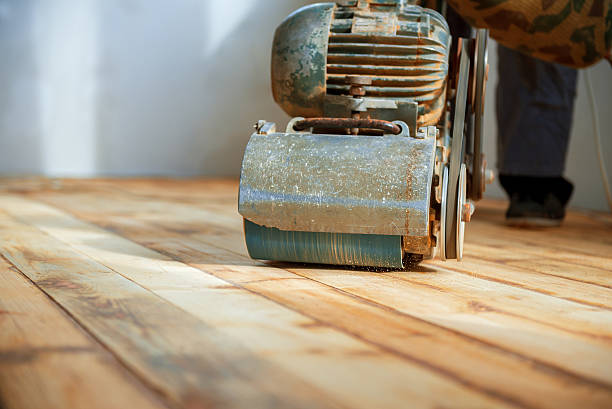
home renovation, parquet sanding, polishing
What you need to know more about floor sanding?
Floor sanding is a process that involves removing the top layer of a wooden floor with abrasive materials, such as sandpaper or a floor sander, to create a smooth and even surface. This process is typically done when a floor is looking worn or damaged, and it can help to restore the natural beauty of the wood while also extending the life of the floor. In this article, we will discuss everything you need to know about floor sanding, including the benefits, the process, and some tips for getting the best results.
Benefits of Floor Sanding
There are several benefits to having your floors sanded, including:
- Restoring the natural beauty of the wood: Over time, hardwood floors can become scratched, stained, and dull-looking. Floor sanding can remove these imperfections, revealing the natural beauty of the wood underneath.
- Improving the durability of the floor: Sanding can remove any weak or damaged areas of the floor, leaving behind a smooth and even surface that is less likely to crack or split over time.
- Enhancing the overall value of your home: Refinished floors can make a big difference in the overall appearance and value of your home. Beautifully refinished hardwood floors can add to the appeal of any space.
The Floor Sanding Process
Before beginning the sanding process, it is important to make sure the room is completely empty of furniture and other items. This will allow the sanding equipment to move freely and ensure that all areas of the floor are accessible. Once the room is empty, the sanding process can begin.
- Start with coarse sandpaper: Begin the sanding process with coarse sandpaper, which will remove any old finishes or stains from the floor. It is important to sand in the direction of the grain, as sanding against the grain can cause scratches and damage to the wood.
- Progress to finer sandpaper: After the initial sanding, progress to a finer grit sandpaper to create a smoother surface. Repeat this process several times, gradually using finer and finer sandpaper until the desired smoothness is achieved.
- Vacuum and clean the floor: After the sanding is complete, vacuum up any dust and debris from the floor. Use a damp cloth or mop to clean the floor thoroughly and remove any remaining dust.
- Apply a finish: Once the floor is completely dry, apply a finish to protect the wood and give it a beautiful shine. There are many different types of finishes available, including polyurethane, wax, and oil-based finishes. Choose the one that best suits your needs and preferences.
Tips for Getting the Best Results
Here are a few tips to help you achieve the best results when sanding your floors:
- Rent or purchase high-quality equipment: To achieve a professional-looking finish, it is important to use high-quality sanding equipment. Consider renting or purchasing a floor sander and edger, as well as a dust collection system to keep your work area clean.
- Be patient: Sanding a floor is a time-consuming process, so be patient and take your time. Rushing through the sanding process can result in uneven or damaged floors.
- Practice safety: Always wear protective gear, including a mask, safety glasses, and earplugs, when sanding floors. Make sure to ventilate the room well to prevent the buildup of dust and fumes.
- Hire a professional: If you are unsure about your ability to sand your floors properly, or if you simply don’t have the time or equipment to do so, consider hiring a professional floor sanding service. They have the expertise and equipment necessary to get the job done right.
In conclusion, floor sanding is an excellent way to restore the natural beauty of your hardwood floors and improve their durability!
